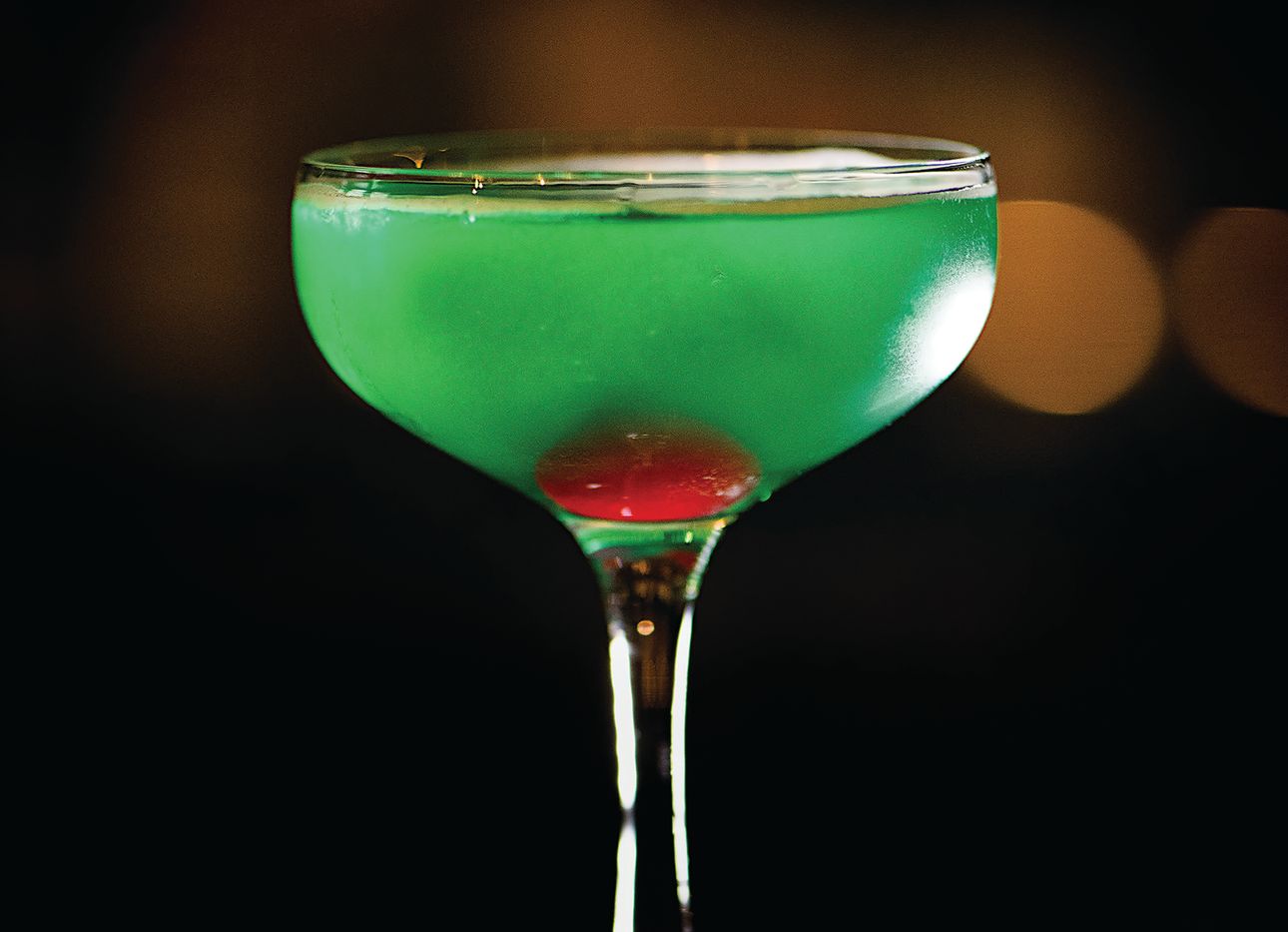
In Tokyo, Cocktails Are Both a Culture and a Craft
For three years, Tokyo-based British journalist Nicholas Coldicott visited approximately four bars a night, conducting research on the Japanese capital’s premier drinks. Some 800 libations later, Coldicott, who has covered the region’s beverage scene for more than a decade, poured his learnings into a new book, Tokyo Cocktails (Cider Mill Press), a collection of more than 100 drink recipes enhanced with stories about the city’s individual cocktail history, traditions, and virtuosos. “In no other country do you encounter such extreme thinking about the science of technique,” Coldicott says of the bar culture he has encountered there. “This seems uniquely Japanese.”
He conveys Tokyo mixologists’ fanatical attention to detail through engaging profiles, such as that of the white-coated, retro bow-tied Kazunari Maguchi. As the owner of Rock Fish, in the bar-heavy Ginza district, Maguchi spent more than 30 years perfecting his iceless “Kaku-hi” (Kakubin highball), made with an 86-proof blended Suntory whisky. Daisuke Ito, of the Shimbashi district’s six-seat Land Bar Artisan, believes that even the way he inserts the spoon and stirs makes all the difference in his quaffable creations. (Ito starts on the far side of a glass with a pulling motion when making martinis; for a Manhattan, his spoon goes in the near end and gets pushed forward.) Kazuo Uyeda, who’s been called Japan’s most famous bartender, shares the secrets to his much copied “hard shake,” which he says delivers the perfect bubbles for his signature gimlet.
Coldicott intermingles his lively reporting with simple drink-making instructions, including the appropriate glassware and garnishes, organized into chapters based on each cocktails’ primary ingredient, such as fresh fruit, tea, or shōchū. There’s a recipe for Aoi Sangosho, a gin-and-green-mint liqueur drink that won a contest held by the Nippon Bartenders Association in 1950; the J.F.K., a tribute to celebrated bartender Yuichi Hoshi’s favorite U.S. president; and My Tokyo, a whisky-based indulgence created by Osaka bartender Yoshiaki Ueda in honor of the 1964 Tokyo Olympics (viewed from above, it resembles Japan’s national flag). Coldicott also offers tips for how to drink like a local, including not clinking glasses to avoid chipping what may well be 1930s Baccarat, not wiping your face with the hand towel, and not going out with an entourage, as most cocktail bars won’t accept groups larger than four.
Coldicott’s knowledge shines brightest near the end of the book, in a section on sake cocktails, in which he explains how the versatile fermented rice drink can stand in for a vermouth or a Prosecco. He would know: Coldicott co-founded, with sake bar owner Yoram Ofer, a blog called KuroKura that raises awareness about Japan’s artisanal sake brewers. “The idea is similar to the book,” he says of the website. “We want to trumpet the people who go far beyond what seems necessary in the pursuit of something exceptional. When you find that level of dedication, and the result actually is more delicious, I want to tell people about it.”